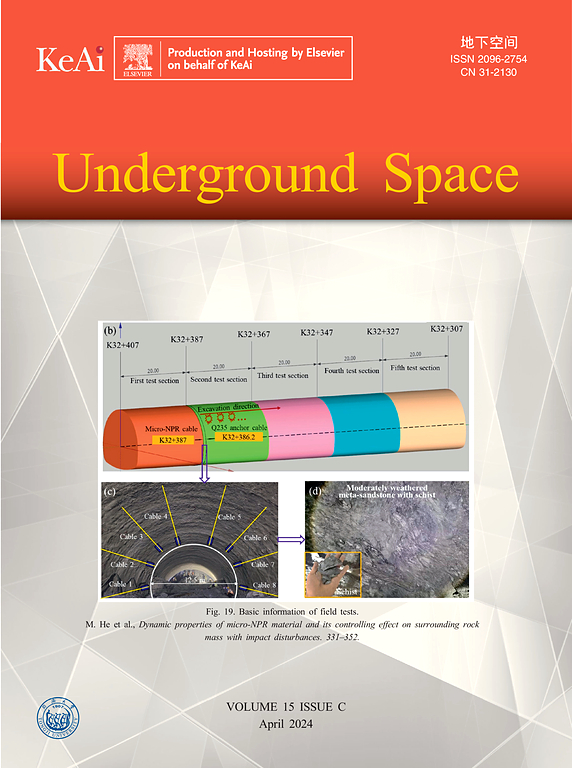Field monitoring and instrumentation in microtunnelling/pipe jacking: A review and future directions
IF 8.3
1区 工程技术
Q1 ENGINEERING, CIVIL
引用次数: 0
Abstract
The popularity of trenchless techniques as a means of utility pipeline installation in urban environments, specifically microtunnelling/pipe-jacking, has increased in recent years due to its minimally-disruptive nature and reduced carbon footprint in comparison to conventional open-cut excavation methods. The response of pipes during the jacking process is complex and is governed by several factors, including ground conditions, the amount and distribution of lubrication, pipe and annulus size, pipeline misalignments and jacking force eccentricity, among others. Design practice remains based on empirical equations and previous drives through similar geology, resulting in uncertainty in jacking force estimates, thereby restricting adoption of the technique. In order to improve our understanding of the pipe-jacking process, pipes incorporating sensors providing real-time measurements of earth pressures, pore water pressures, axial strains and hoop strains can be used; but the number of such studies reported in the literature is small and the potential of instrumentation on routine projects is largely untapped. Moreover, jacking pipe monitoring practice lags behind the state-of-the-art instrumentation techniques used for monitoring other geotechnical infrastructure. The purpose of this paper is to provide a thorough review of learnings from instrumented pipe-jacking case studies and other supporting research, as well as to propose potential solutions to research gaps in the current state of design practice and field monitoring of pipe jacking projects.
微隧道/顶管的现场监测与仪器:综述与未来发展方向
非开挖技术作为城市环境中公用管道安装的一种手段,特别是微隧道/顶管,近年来越来越受欢迎,因为与传统的露天开挖方法相比,它具有最小的破坏性和更少的碳足迹。顶进过程中管道的响应是复杂的,受多种因素的影响,包括地面条件、润滑量和分布、管道和环空尺寸、管道错位和顶进力偏心等。设计实践仍然基于经验方程和以前在类似地质条件下的驱动,导致顶升力估计的不确定性,从而限制了该技术的采用。为了提高我们对顶管过程的理解,可以使用带有传感器的管道,这些传感器可以实时测量土压力、孔隙水压力、轴向应变和环向应变;但在文献中报道的此类研究数量很少,仪器在常规项目中的潜力在很大程度上尚未开发。此外,顶管监测实践落后于用于监测其他岩土基础设施的最先进的仪器技术。本文的目的是全面回顾从仪器顶管案例研究和其他支持性研究中获得的经验教训,并提出潜在的解决方案,以弥补目前设计实践和顶管项目现场监测中的研究空白。
本文章由计算机程序翻译,如有差异,请以英文原文为准。
求助全文
约1分钟内获得全文
求助全文
来源期刊

Underground Space
ENGINEERING, CIVIL-
CiteScore
10.20
自引率
14.10%
发文量
71
审稿时长
63 days
期刊介绍:
Underground Space is an open access international journal without article processing charges (APC) committed to serving as a scientific forum for researchers and practitioners in the field of underground engineering. The journal welcomes manuscripts that deal with original theories, methods, technologies, and important applications throughout the life-cycle of underground projects, including planning, design, operation and maintenance, disaster prevention, and demolition. The journal is particularly interested in manuscripts related to the latest development of smart underground engineering from the perspectives of resilience, resources saving, environmental friendliness, humanity, and artificial intelligence. The manuscripts are expected to have significant innovation and potential impact in the field of underground engineering, and should have clear association with or application in underground projects.
 求助内容:
求助内容: 应助结果提醒方式:
应助结果提醒方式:


